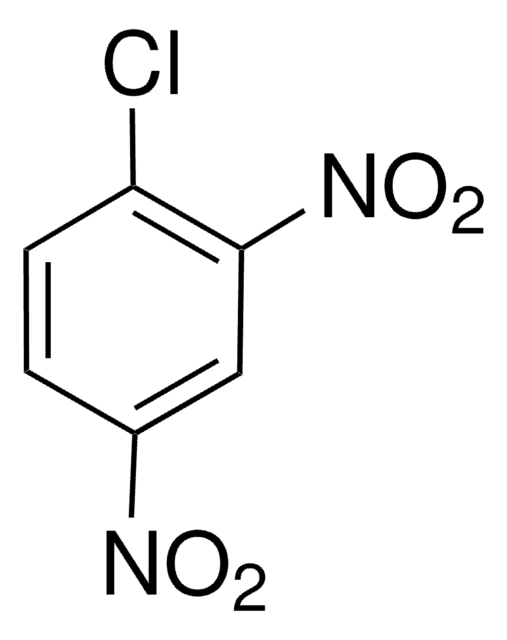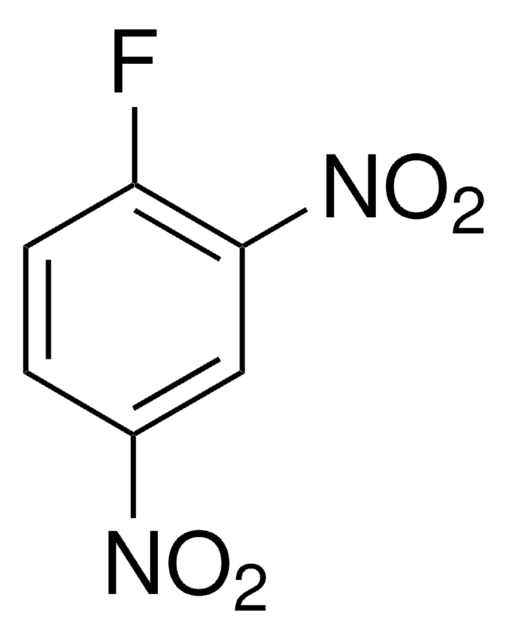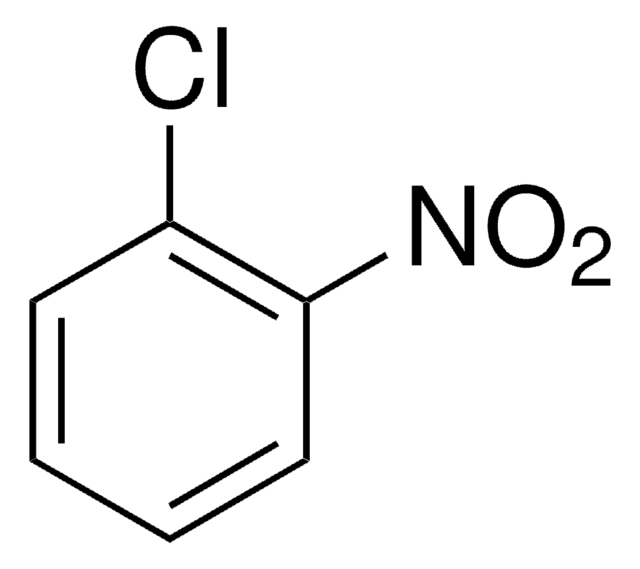138630
1-Chloro-2,4-dinitrobenzene
97%
Sinónimos:
2,4-Dinitrochlorobenzene, CDNB, DNCB
About This Item
Productos recomendados
Quality Level
assay
97%
form
solid
expl. lim.
22 %
bp
315 °C (lit.)
mp
48-50 °C (lit.)
solubility
alcohol: soluble (hot)
alcohol: very slightly soluble (cold)
benzene: soluble
carbon disulfide: soluble
diethyl ether: soluble
water: insoluble
functional group
chloro
nitro
SMILES string
[O-][N+](=O)c1ccc(Cl)c(c1)[N+]([O-])=O
InChI
1S/C6H3ClN2O4/c7-5-2-1-4(8(10)11)3-6(5)9(12)13/h1-3H
InChI key
VYZAHLCBVHPDDF-UHFFFAOYSA-N
¿Está buscando productos similares? Visita Guía de comparación de productos
Categorías relacionadas
Application
Biochem/physiol Actions
Preparation Note
signalword
Danger
Hazard Classifications
Acute Tox. 2 Dermal - Acute Tox. 4 Oral - Aquatic Acute 1 - Aquatic Chronic 1 - Eye Dam. 1 - Skin Irrit. 2 - Skin Sens. 1
Storage Class
6.1A - Combustible acute toxic Cat. 1 and 2 / very toxic hazardous materials
wgk_germany
WGK 2
flash_point_f
381.2 °F - closed cup
flash_point_c
194 °C - closed cup
ppe
Eyeshields, Faceshields, Gloves, type P2 (EN 143) respirator cartridges
Elija entre una de las versiones más recientes:
¿Ya tiene este producto?
Encuentre la documentación para los productos que ha comprado recientemente en la Biblioteca de documentos.
Los clientes también vieron
Global Trade Item Number
| Número de referencia del producto (SKU) | GTIN |
|---|---|
| 138630-100G | 4061838732415 |
| 138630-2KG | |
| 138630-500G | 4061838732422 |
| 138630-5G | 4061835149803 |
Nuestro equipo de científicos tiene experiencia en todas las áreas de investigación: Ciencias de la vida, Ciencia de los materiales, Síntesis química, Cromatografía, Analítica y muchas otras.
Póngase en contacto con el Servicio técnico












